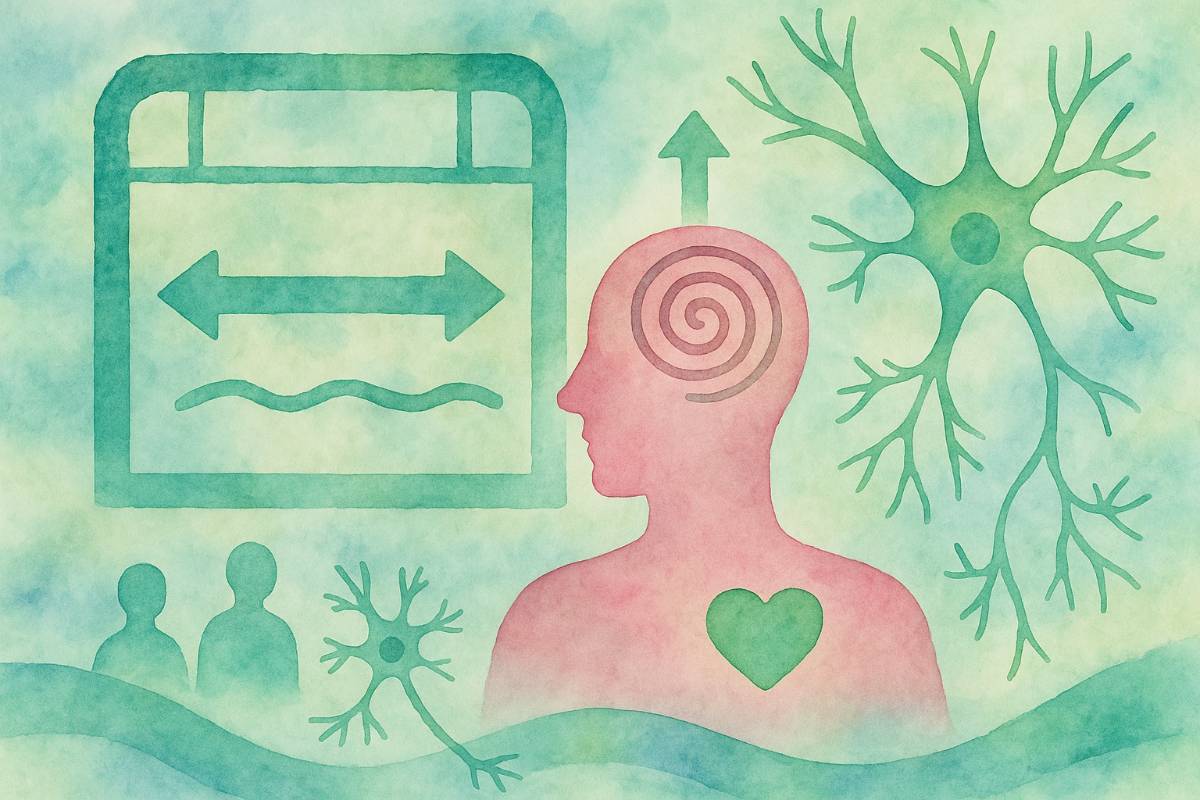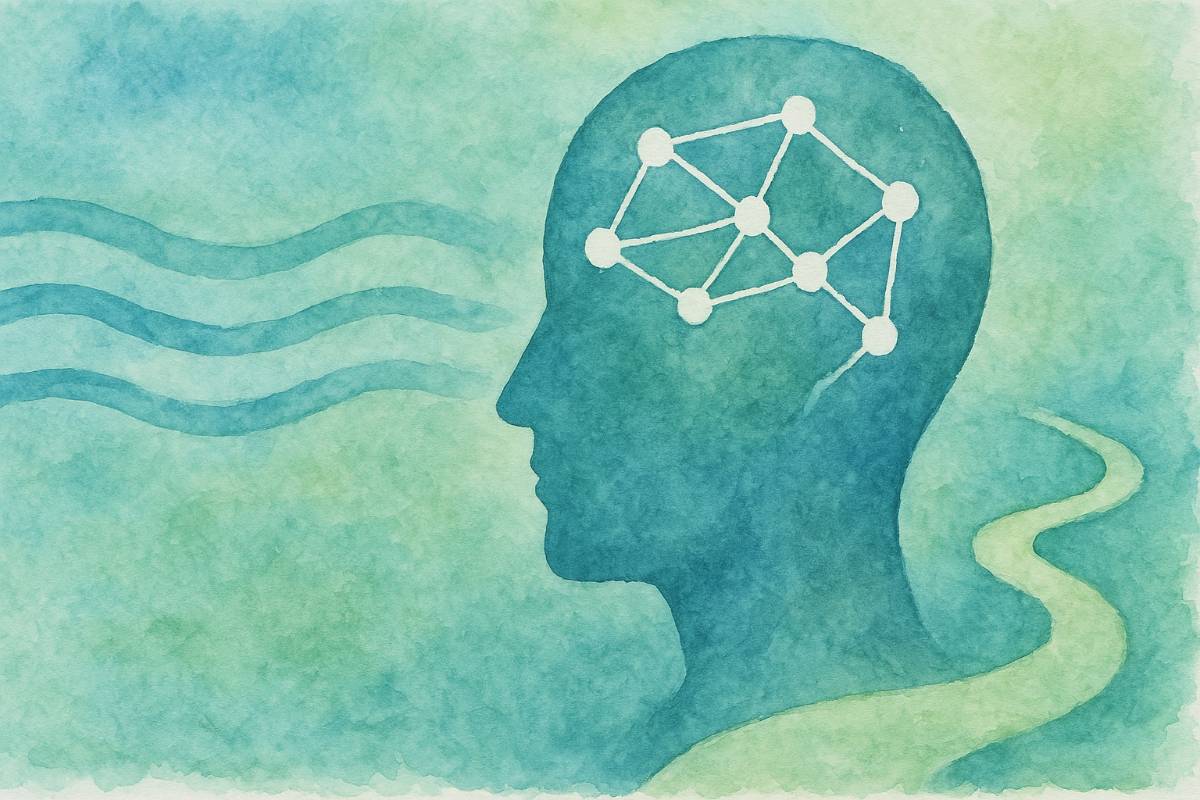Follow the
Made Simple Blog
Concise and actionable advice from senior EMDR thought leaders, delivered to your inbox monthly
Made Simple:
What to Do When EMDR Stalls
Getting Unstuck: 7 Practical Interventions When EMDR Processing Stalls

In one sentence: Stuck EMDR processing is not a failure—it’s a signal from the nervous system that something needs your attention, and with the right intervention, progress can resume.
In one paragraph: When a client
says, "Nothing is happening," it can be discouraging—but it’s also an
important indicator that their nervous system is protecting itself. Stuck
processing often sends us a signal that the client's nervous system is
outside the window of tolerance or that memory networks are not ready to
integrate. These moments aren’t barriers—they’re opportunities to slow down,
reassess, and respond with skill. With attuned, well-timed interventions,
EMDR therapists can help clients re-enter the processing zone and resume
their healing journey.
When EMDR processing stalls, it’s not time to push harder—it’s time
to shift strategies.
Why EMDR Processing Stalls and How You Can Fix It
Every EMDR therapist knows the moment: you’re in Phase 4, you’ve been running bilateral stimulation sets, and suddenly your client says, “Nothing is happening.” Their image hasn’t changed. The negative cognition is stuck. The subjective unit of disturbance (SUD) level stays the same.
Stuck processing is a common part of EMDR therapy, especially with clients with histories of complex trauma. It doesn’t mean you’re doing it wrong. It means the client's brain is trying to protect itself—and it needs your help.
Getting stuck is part of EMDR. And when you know how to recognize it, name it, and respond to it with care, it becomes part of the healing process rather than a barrier to it.
Let’s look at why processing stalls and explore some practical ways to help get things moving again.
Why Does EMDR Processing Stall?
From the perspective of the Adaptive Information Processing (AIP) model, stuck processing happens when adaptive and maladaptive memory networks don’t fire at the same time. When these networks can’t link, there’s no integration—and, as a result, no progress. You’ll often hear clients say, “It still feels the same,” or “I’m just watching it, but nothing is different.”
What Is the Window of Tolerance?
Coined by Dr. Dan Siegel, the window of tolerance refers to the range of arousal where a person can remain regulated. In EMDR, this is the window that allows us to process traumatic memories effectively. Inside this window, the sympathetic and parasympathetic nervous systems work in balance. The client can stay present, observe the past, and maintain dual awareness—necessary ingredients for successful EMDR reprocessing.
When clients leave the window—either through hyperarousal (panic, anxiety, or overwhelm) or hypoarousal (numbness, disengagement, or dissociation)—processing tends to stall or flood.
As an EMDR therapist, tracking your client’s window is essential. And so is tracking your own. If your nervous system is dysregulated, your clients will feel it—oftentimes unconsciously. When you're out of the window of tolerance, it becomes harder to stay attuned and intervene skillfully.
7 Common Reasons EMDR Processing Gets Stuck
When processing gets stuck, it's often a signal that your client's nervous system needs your attention. Rather than pushing on and hoping for better results, heed this signal. It indicates that an adjustment must be made. Here are the most common causes of stalled EMDR processing:
- The client is outside their window of tolerance (too activated or too shut down).
- The therapeutic relationship isn’t yet secure enough to support trauma reprocessing.
- An earlier target is interfering with the one you're currently working on.
- Ego states or parts are blocking access or overriding the process.
- The client’s memory is implicit or unavailable (there’s little or no conscious access to the memory).
- The client has “both feet in the past” and can’t access present safety or dual awareness.
- Limiting beliefs are blocking adaptive resolution (e.g., “I’ll never get better”)

7 Interventions to Get Unstuck
Francine Shapiro famously encouraged EMDR therapists to “stay out of the way” and let the brain heal itself. And, sometimes, that works.
But when you’re working with clients who have complex PTSD, developmental trauma, or attachment injuries, they often need more active, skillful support. Stuck EMDR reprocessing calls for intervention—not avoidance. Let’s look at seven interventions that often help.
1. Stop Processing
Sometimes the most effective thing you can do is pause. If your client is overwhelmed, disengaged, or dysregulated, take a break. Use the time to reestablish safety, reassess the target, or focus on resourcing. You may even consider new approaches to resourcing, like connecting with spiritual resources.
There’s no rush—solid treatment depends on thoughtful pacing.
2. Change the BLS
Modifying the bilateral stimulation can make a surprising difference. Try switching the modality—for instance, from tactile to eye movements. Change the speed, direction, or intensity. Switching from horizontal to diagonal eye movements or shortening the sets can also help shift how the brain engages with the material.
3. Support Nervous System Regulation
Help your client stay in the window of tolerance using simple grounding tools, such as:
- Square breathing: 4-second inhale → 4-second hold → 4-second exhale → 4-second hold.
- Soothing sensory input: A drop of lavender essential oil or holding a weighted object.
- Somatic interventions: Help your client notice their breath, enhance embodied self-awareness, and feel more comfortable incorporating movement into the therapy room.
You can integrate these interventions between or during bilateral stimulation sets.
4. Explore Earlier Targets
Sometimes EMDR reprocessing stalls because there’s an unresolved earlier memory blocking the one you're targeting. Use the floatback or bridge technique to find it: Ask the client to focus on the image, negative cognition, emotion, and body sensation, and allow their mind to “float back” to an earlier time they felt the same way. Often, that’s where the work needs to begin.
5. Work with Ego States (Parts)
Clients with complex trauma often have internal parts with conflicting agendas—some parts want to process, others want to shut it down. When EMDR processing activates a protector, it sometimes helps to pause and integrate IFS-informed strategies.
After you’ve paused due to a protector, evaluate the part’s role with curiosity by asking:
- Can you notice what part is showing up right now?
- What does that part need?
- What would this part like you to know?
6. Focus on Body Sensations
When clients have trouble accessing explicit memory, shift attention to the body. Ask, “What do you notice in your body right now?” and invite them to “just notice that.” A somatic approach helps access implicit memories and often provides access to earlier memories that were not otherwise reachable.
7. Add Supportive Figures
Resource installation isn’t just for preparation. You can bring in nurturing or protective figures during reprocessing. Some clients need external support to face what happened.
Final Thoughts
Getting stuck is part of EMDR. And when you know how to recognize it, name it, and respond to it with care, it becomes part of the healing process rather than a barrier to it.
Clients with complex trauma need a therapist who knows when to move forward and when to slow down. These seven tools will give you options when your client says, “Nothing is happening”—and help you guide them back into the flow of adaptive healing.
Want more tools to help clients get unstuck? Get a copy of Rotem’s book, The Art and Science of EMDR, to access dozens of practical strategies for turning stuck moments into steady progress. You are also welcome to join the EMDR Learning Community—a free space for thousands of EMDR therapists around the world who are passionate about learning EMDR together.
More Articles
Follow the Made Simple Blog
By bilateralstimulation.io
Concise and actionable advice from senior EMDR thought leaders,
delivered to your inbox monthly
© Copyright bilateralstimulation.io BLS GmbH 2025
